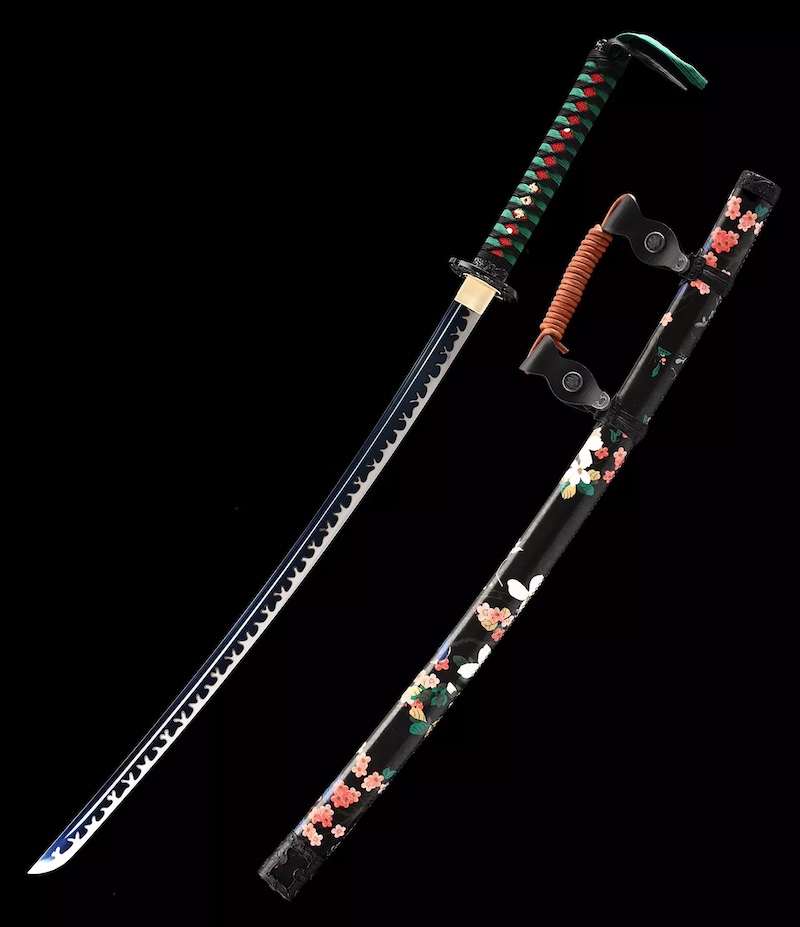The Katana: More than Just a Sword
Few weapons can claim the iconic status of the Japanese katana. Its reputation goes beyond its utilitarian function as a tool of war, transcending into the realms of art, spirituality, and symbolism.
This article seeks to unearth the historical, cultural, and symbolic layers of the katana, revealing why it stands as more than just a Japanese sword.
Historical Background
The katana originated in feudal Japan, becoming the weapon of choice for the noble samurai class. Far from being a hastily made implement of battle, each katana is an artistic masterpiece.
Crafted meticulously by skilled swordsmiths, or “toshos”, the production process involved folding the steel multiple times, with traditional swords boasting up to a million microscopic layers.
This intricate process bestows upon the katana its renowned sharpness, resilience, and a unique patterned appearance, or “hada”.

If you want to know more about katana, please visit https://www.truekatana.com
Symbol of the Samurai
Beyond its material characteristics, the katana came to embody the spirit of the samurai. It was regarded as an extension of a samurai’s soul, signifying personal honor and societal rank.
The manner in which a samurai wielded his katana was a reflection of his discipline, training, and adherence to the code of bushido – the way of the warrior, which prioritized honor, loyalty, and personal development.
Cultural Significance
In the broader societal context, the katana symbolizes qualities revered in Japanese culture, such as harmony, balance, and precision. The very act of crafting a katana is steeped in Shinto ritual, infusing spiritual values into the weapon.
Swordsmiths initiate their work with purification rites, their every hammer stroke often accompanied by fervent prayers. This transformation of steel into a blade becomes a spiritual journey, encapsulating self-discovery and enlightenment.
Symbolic Duality
The katana, in its essence, symbolizes a balance of opposites. Its blade is fragile yet indestructible, lethal yet beautiful.
This duality is reflective of the samurai’s life, characterized by a blend of conflict and peace, violence and serenity. The “ha”, or edge of the katana, possesses a sharpness capable of swift death, while the “mune”, or back of the blade, is designed to absorb shock, demonstrating resilience.
This harmony of hardness and flexibility embodies the ideal samurai – fierce in battle yet compassionate and restrained.
The Katana in the Modern World
Despite the passage of time, the katana retains its sacred stature in Japan. It is invoked as a symbol of power in Shinto ceremonies, believed to ward off evil spirits.
Traditional martial arts like “iaido” and “kenjutsu” still train in the art of the katana, focusing more on spiritual refinement than combative prowess.
Globally, the katana has carved its niche in popular culture, featuring prominently in films, anime, and literature. Its recurring presence serves as an international gateway to understanding the ethos of Japanese culture.
From the samurai’s soul to a symbol of national identity, the katana is a lot more than just a sword. It is a cultural icon, a piece of art, a spiritual instrument, and a living testament to the values and philosophies of an ancient society. Buy high-quality katanas, please visit the website https://www.truekatana.com/catalog/japanese-samurai-swords/katana.
To understand the katana is to glimpse into the heart of Japan itself – its history, its values, and its identity. The katana stands apart in the arsenal of the world, revered not for the destruction it can cause, but for the stories it tells and the values it embodies.
The katana, indeed, is more than just a sword – it is an enduring symbol of the Japanese spirit.

